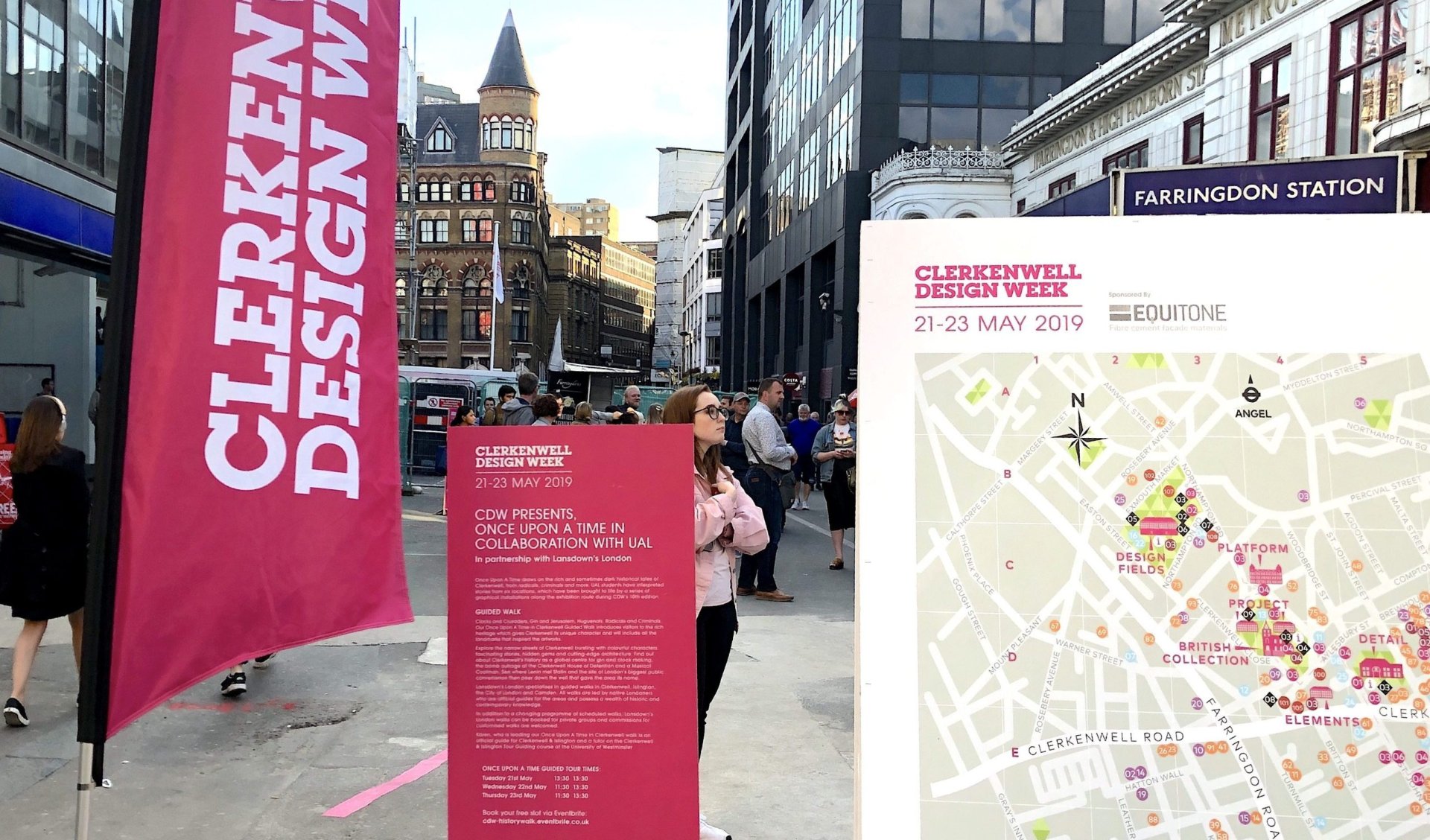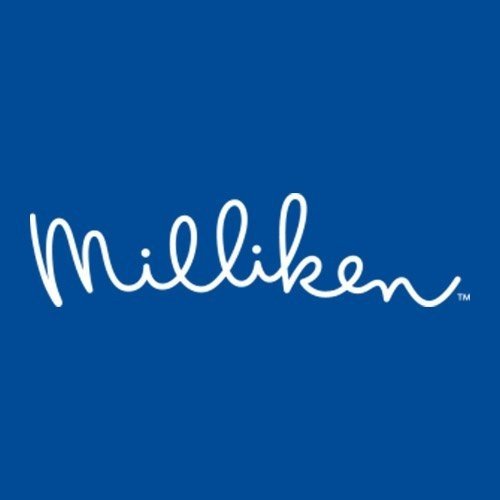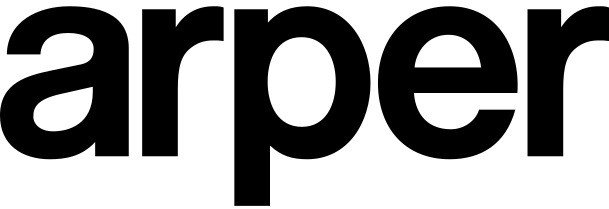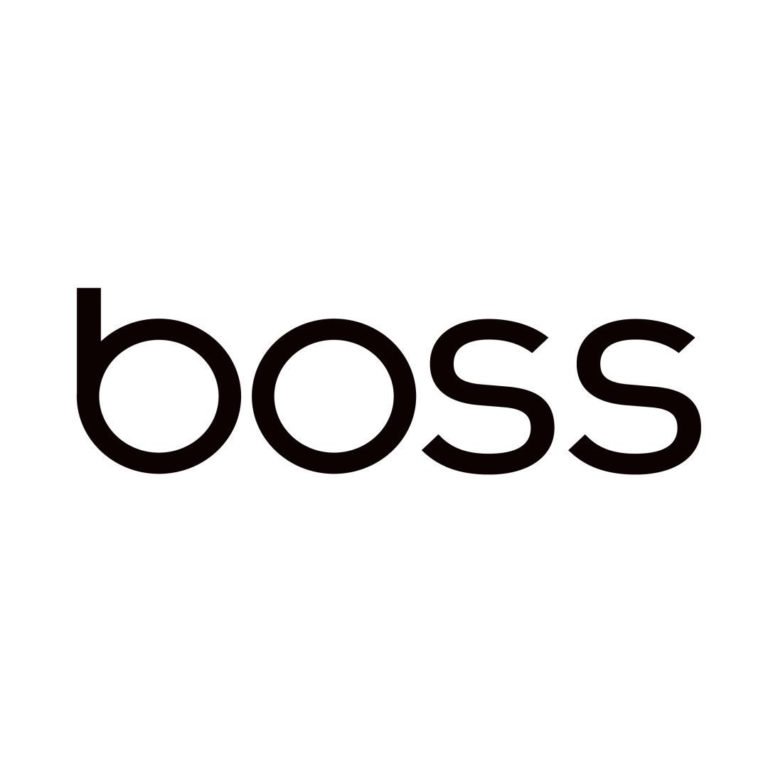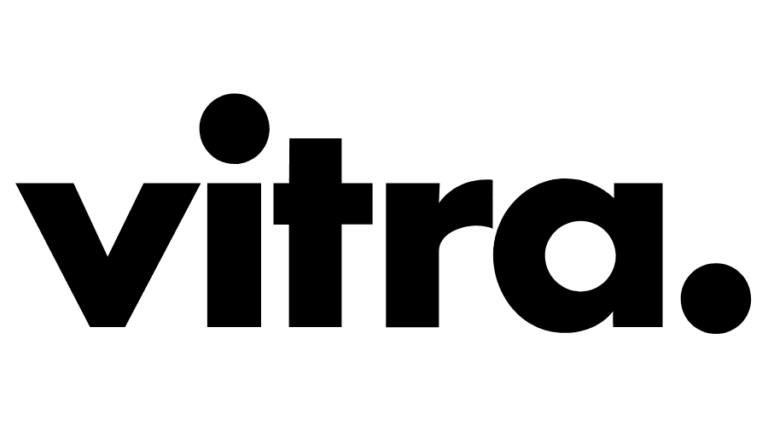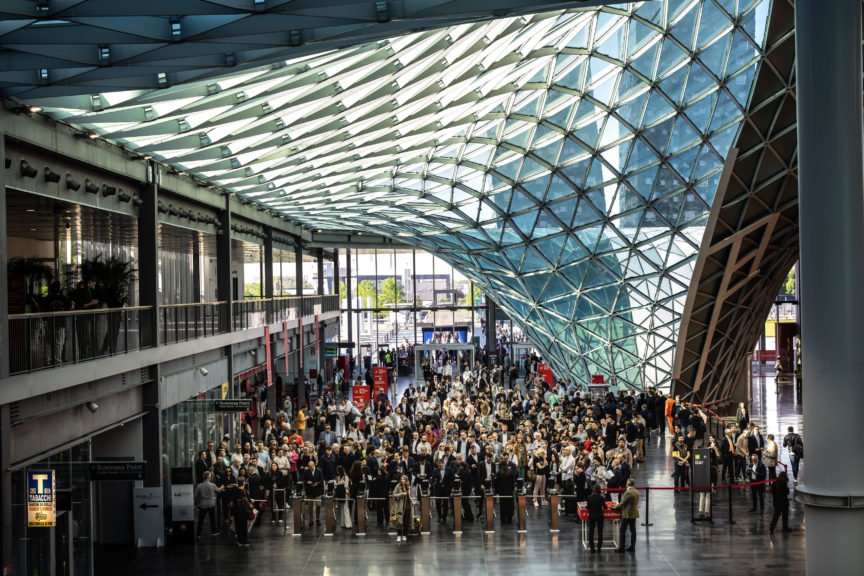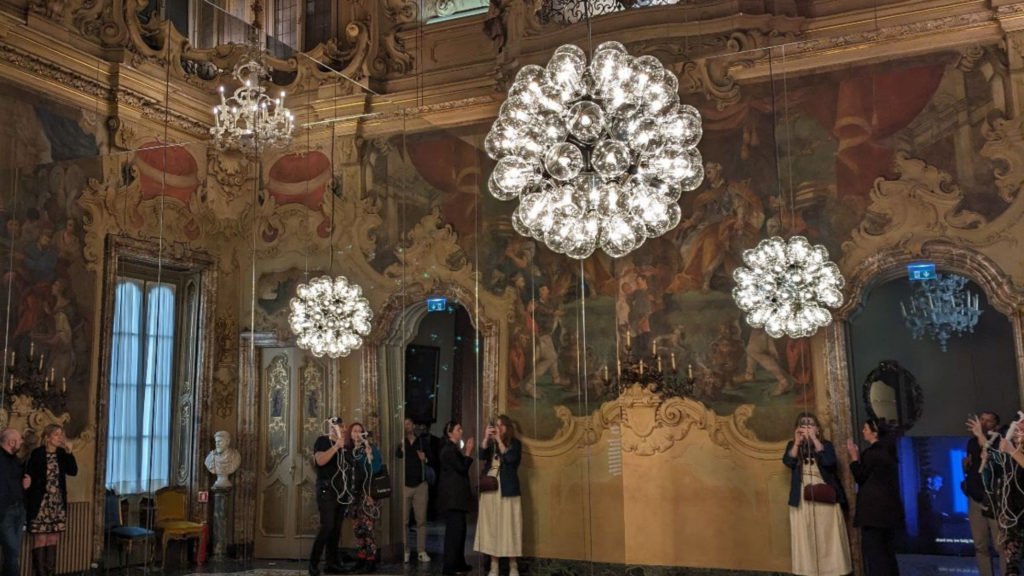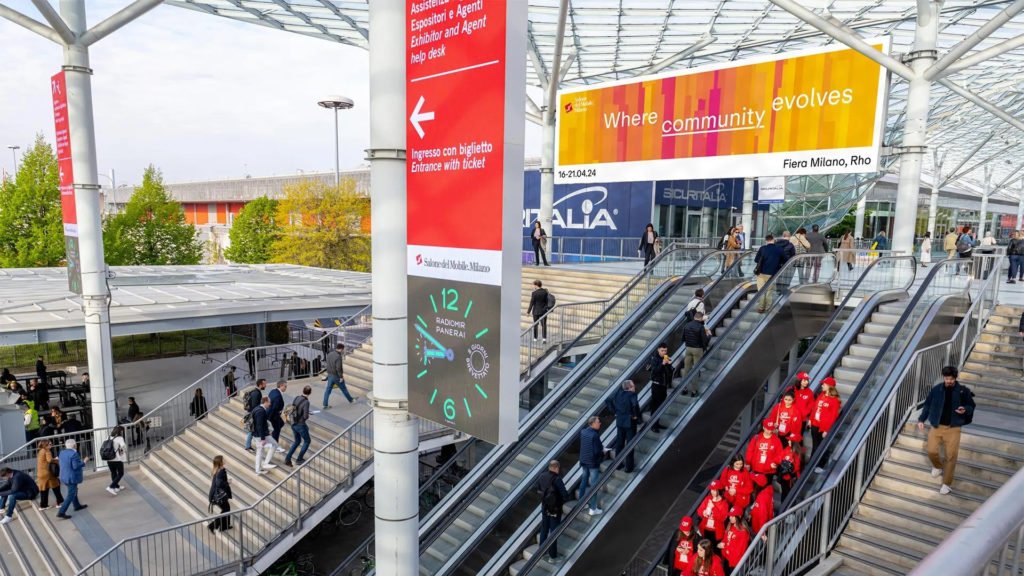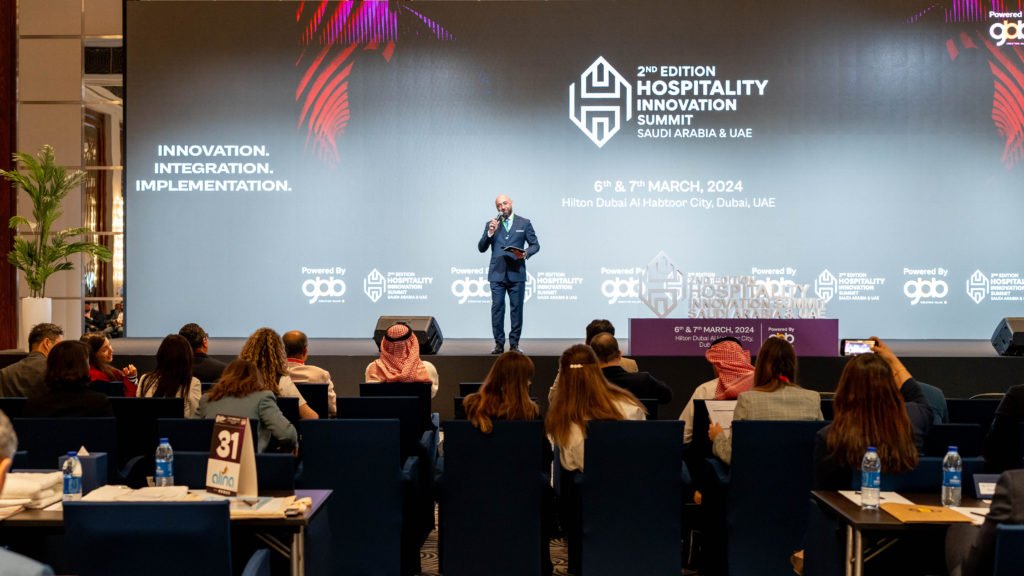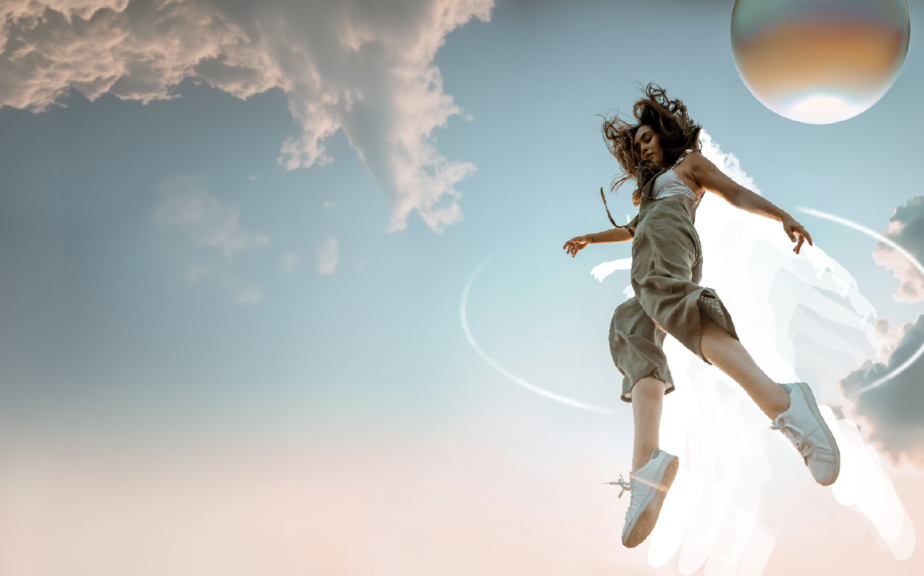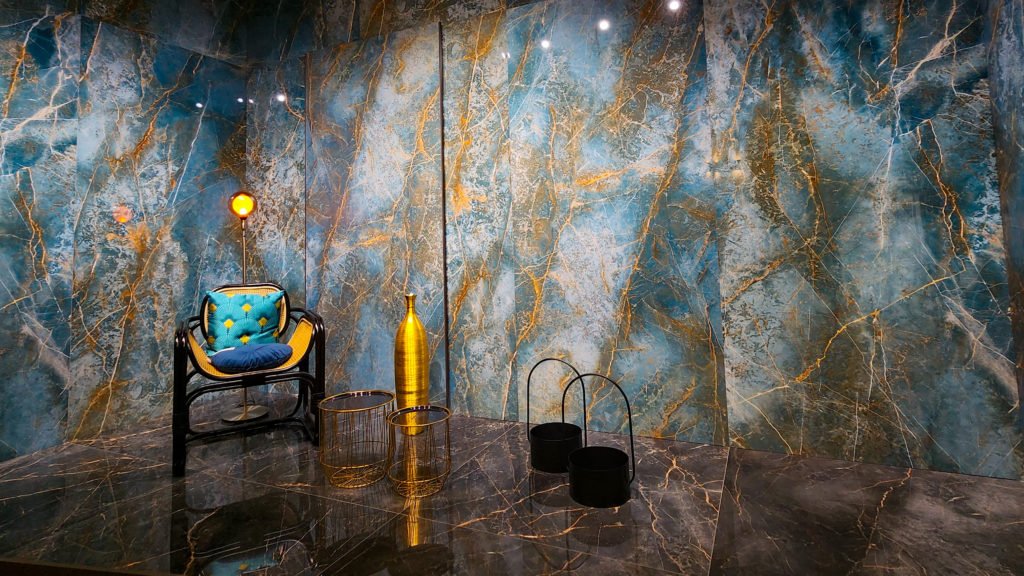Cobbled streets, historical buildings and walkways interspersed with parks, plus more interior design and furniture inspiration than you could shake a stick at! The quaint and beautiful neighbourhood of Clerkenwell, London, came alive this May for the 10th anniversary of Clerkenwell Design Week.
The unmistakable ‘hot pink’ (a colour synonymous with CDW branding) guided visitors to furniture showrooms, design displays, museums, talks, events, and more. And amidst all this inspiration and talent was non stop entertainment, food carts, and free flowing prosecco (and of course, the innumerable gin parties). Clerkenwell Design Week is truly the ultra refined design mardi gras of the A+D community.
The most noticeable aspect of CDW this year was the clear shift towards human centric design. Almost all brands and designers are of one mindset – to place the human at the centre of the design experience.
There is equal importance thus given to the pervading topics of wellness, biophilia, ergonomics, agile workplaces, and more. And underlining all these is a greater respect for the planet – to saving and preserving it along the way.
Trend Spotting
“Not quite sugary”
Pastel hues were everywhere, emerging from the Nordic region and spreading across the global design world. They were, in one form or another, juxtaposed with the pantone colour of the year, Living Coral, and combined with raw materials and earthy, neutral tones. Cane made a comeback, harking back to a time of natural artisanal design (more on that below). The overall tonality at the fair leaned towards calming and soothing shades, and at a talk by Eporta, it was pointed out that the pastel tones that are on trend were not ‘sugary’, but more in touch with nature. Mints and pale blues, for example, were more reminiscent of the sky, which brings us to our next trend spot – nature.
Above: Andreu World, Fritz Hansen, Kinnarps, Marazzi, Arper and Agilita
Bringing the Outside In
Considerable homage was given to nature and a move towards connecting with the Earth. And this is not a trend that is going away anytime soon. Greenery in indoor spaces has multiple health benefits, and biophilia is currently ruling the roost in interior design. Long may that continue. Office Blueprint’s Welltek stand showcased Naava’s unique ‘active and smart’ green wall, which is based on a 1989 NASA study on developing clean and natural air within space stations. The study surprisingly revealed that 98% of air purification takes place in a plants’ roots, not leaves, contrary to popular belief. And so the geniuses behind Naava developed a fantastic biofiltration system using specific plant species known for their air purification qualities to create their active green wall.
Above: Naava, Orangebox, Kinnarps and Boss Design
Playfulness / Nostalgia
A new element of design has entered the worksphere. Spaces that exude or encourage joy and fun, and feature bold and vibrant interiors and furniture, as well as allow for self expression (which was not such a consideration in the past). These spaces allow you to relax and breathe a bit. They may also invoke nostalgia – velvet and gold, and shapes of the seventies and sixties are making an appearance both in furniture and furnishings. Shaw Contract invited Brighton-based graphic artist and designer Lois O’Hara to reinvigorate their showroom space. Lois created a ‘Flow’ of vibrant tones that poured as liquid across, tying in all the architectural elements and creating a walkway for the visitors.
Above: Calligaris, Morgan, Shaw Contrat, Haworth Cappellini, and Moooi and Vitra
Cocooning
Commercial spaces are adopting a softer approach to their design with ‘spa-like’ interiors, focusing more on the human aspect of workspaces. Employees can ‘keep calm and work on’. And while open plan, agile working is all the rage, privacy and noise reduction follow suit. Enter pods – pods were everywhere at CDW and seemed to provide a solution for any situation. Pods for meetings, pods for privacy and quiet, pods for rest, and even pods for some VR based experiences (see Orangebox’s collaboration with Scott Brownrigg).
Above: The Meeting Pod, Framery, Silent Lab, Chat Pod, Kinnarps
Perfectly Imperfect Spaces
A greater preference towards artisan collections (something that is not mass produced, more handmade) is currently resonating with the masses. And so, high end brands are now turning their sights towards the imperfect, more artisanal approaches to add to their portfolio. To that end, worthy of mention was Orangebox’s Circular Economy student project, curated by Steve Whitehill. While this project focused on waste fabric being repurposed by design students to create covers for Orangebox’s popular Sully stool, the inspired end results could easily fall in the bespoke category, giving you an individual, one off piece.
Above: Sika Design, Orangebox, Karndean Design Flooring
Experiential Design and the Return of Retro
The 1970s are making a comeback. Retro lines, curvilinear shapes, and wood and fabric combinations could be seen in nearly every furniture space – the fluid geometry of the sixties and seventies, along with the colour palette of the fashion from that era.
Interior design is also becoming increasingly about curating spaces that provide experiences, not simply focus on the activity. “People expect a whole new level of experience and the workspace, in particular, was crying out to redressed,” said the panel at Future Space, one of the talks held at Spa Fields. Based on that, we noticed a significant play of trends, using vintage and antiques in clinical or modern spaces, that add to the experience. In short, putting the human back in the design. Lights, colours, moods, and materiality all revolve around ensuring that the individual’s encounter is a pleasurable or meaningful one.
Above: Wilkhahn, Wagner, Thonet, Tacchini, Moooi, Morgan, Arper, Fritz Hansen, Bisley
Eat Well Seated
Andreu World has merged gastronomy and seating in a manner possibly never done before. We attended the launch of their book ‘Eat Well Seated’, and chatted with the author for some insight on this dimension. The book includes beautiful design inputs as well as comments from Michelin starred chefs from around the world.
Super Surfaces and Materials
Surfaces have become so much more interesting. Cosentino’s precious stones were always intriguing with their translucent, gem-like quality. However, we never imagined porcelain plains to be as artistic as is presented by Porcelanosa. But most original was Aectual’s sustainable, customisable, 3D printed flooring solutions. Not only can they be completely bespoke (you just share your designs with them), they are also totally in line with your green labels, providing materials that include recycled plastics. The whole idea is quite clever!
Above: Modulyss, Moooi, David Irwin x Bute, Casalis, Aectual, Porcelanosa, Milliken, Marazzi, Kvadrat, Shaw Contract, Aectual
Technology at the Heart of Everything
Digital methods are increasingly disruptive, and they have created the start of a new era of design and products to match. Brands and designers have to employ technology at the heart of everything they do, to facilitate usability (of furniture/product or environment) and even wellness . LoOok Industries devised a contraption that allows you to ‘shake off’ stress. Their tagline “Why zebras don’t get ulcers”, attracted a lot of attention, with visitors eager to try out their Neuro Activation Pod, which could easily fit in a corporate, social or residential spot. The technology is based on sensory tissue stimulation, very low frequency sinusoidal vibration, which is extremely relaxing both physically and mentally. And Kinnarps’ reimagined showroom, titled Workplace House introduced us to some serious next level sci fi. Besides having technology embedded in to create a superbly conceptual, collaborative space, what got our goat was the ‘wall of post its’, that could create a collaborative meeting screen of sorts, allowing anyone to pitch in and converse, or ‘stick a post it’ on that wall with an app.
Above: Future Design, Orangebox, Kinnarps, LoOok
Sustainability / The Earth Trend
David Attenborough’s documentaries have pierced all circles. He said, we have 20 years left to change the direction of the planet. And the design world really heard this. Sustainability became more than a buzzword, and embraced Vegan leather, heirloom pieces and completely biodegradable furniture (check out Casalis below). “The Earth trend is not really a trend, it is a way of life, and long may it continue,” said designer Lorna Oakley at an Eporta talk on Future Insights. “Manufacturing more responsibly and thinking through the supply line was a big request from designers.”
Plastic Oceans
A talk by Jo Ruxton, organised by Humanscale and held at their Clerkenwell showroom in London, opened our eyes to the plight of the oceans. Jo Ruxton, director of the Netflix documentary, Plastic Oceans, gave a jaw dropping lecture on the urgency to cut back on plastic, and to recycle and reuse accordingly. Not only because of how it is affecting marine life, but also because the food chain leads directly to human consumption.
Above: Chat Pod, Casalis
Wellness
The Future of the Workplace
Many events, talks and exhibits hovered around this theme. From the future of design, and furniture in general, to more specifically, the integration of iGen into the office environment. At one of ‘Conversations’ held in Spa Fields, Future Space, some key disruptive thoughts got us to think about aspects of ergonomy, and how it should start to focus on the group versus the individual.
iGen and the Future of the Workplace
Orangebox’s Nathan Hurley gave a deeply insightful lecture on the glaring talent gap between what the higher learning environments are pumping out and what the current workplaces are getting. Generation Z or iGen are undergoing a massive culture shock when moving from a ‘customer’ based role as a student, where the environment and the attitude coddles them, to an office desk where they are told what to do.
Orangebox’s report that is due for release this October goes into much more vivid detail, but also sites some great examples of overcoming this chasm. Sir James Dyson’s college is one such example, where those enrolled actually get paid to study, in return for a day or two a week of working within the Dyson offices. And this concept is being adopted by Ford and more. (More on this in an upcoming article on our Student Hub)
Ergonomics and Agile Working
Ergonomics, of course, still remains a key point in all aspects of furniture, and agile workspaces are pretty much taking over the corporate industry. This is not to say that traditional fixed desk offices will no longer be required. They will, however, be integrated with collaborative zones for an all round complete office experience.
Herman Miller calls this the Living Office. We had the pleasure of visiting their new showrooms in London, where virtually all spaces are either collaborative, and ‘agile’, or focusing on an activity (as opposed to a person or a role). This allows employees to feel more at home in the workplace, and move from space to space based on their need for privacy, group discussions, relaxation, etc (you can read more about the living office here)
By popular demand, Bene launched another version of their popular STUDIO modular range – the Workbench. It allows for a wider range of collaborative uses, including in pop up shops and cafes.
Above: Hotbox by Simplicity, Herman Miller, Guialmi, Agilita, Sedus, Bene, Connection, Allermiur, CBS, Ergotron, Wilkhahn
Worthy Exhibits
Design Fields
Right in the heart of Spa Fields park sits the Design Fields exhibit, showcasing products and contemporary design from around the world. Our walk through this section brought us across several amazing, groundbreaking products (special shout out to Chat Pod with their fully sustainable design and manufacturing process), as well as the latest happenings with our brand partners there.
Above: Wagner, Thonet, Tacchini, Silent Labs, Sika Design, Ondarreta, Piaval, OMK, David Irwin x Bute, Calligaris, Aectual, Humanscale, LaCividina
Platform
Adding a touch of history, the Platform exhibit took us underground to the subterranean House of Detention, to witness the individual global talent that exists in the design world. Some of the cutting edge pieces truly defy thought and boundaries of concept, breaking the mould entirely. A couple of design names that really stood out were Evan James and ePorta’s one to watch, INTARC Design.
Above: Spitfire Furniture, Gigi, Junction Fifteen, INTARC Design, Store Projects, Evan James Design, Tropel Designs
Project
Turning the corner, down the lane from Platform, and set in the beautiful grounds of St James Church, was the tented Project exhibit. This was the showcasing spot for some of the leading international brands in contract furniture. We discovered amazing pod designs by Agilita and more, and awesome agile, transformable pieces by Guialmi.
Above: Aeris, Social Spaces, Karndean Design Flooring
Light
By far the most uncommon and dramatic venue was appropriately for the Light exhibit, based underground over many levels in a cold store turned nightclub called Fabric. Brick vaults and a dungeon style backdrop added a thrilling contrast to the light installations displayed against it.

